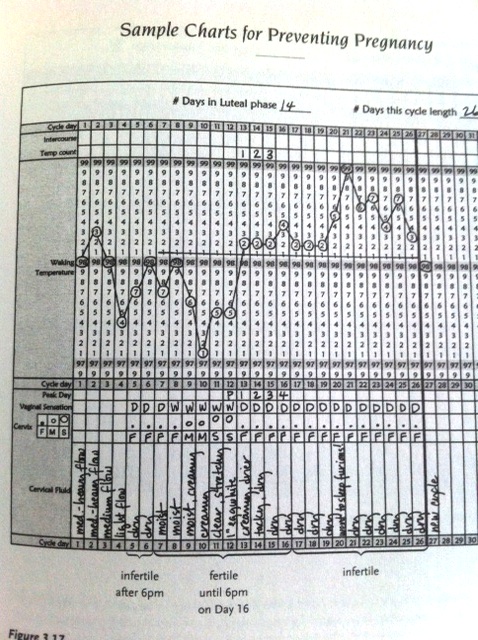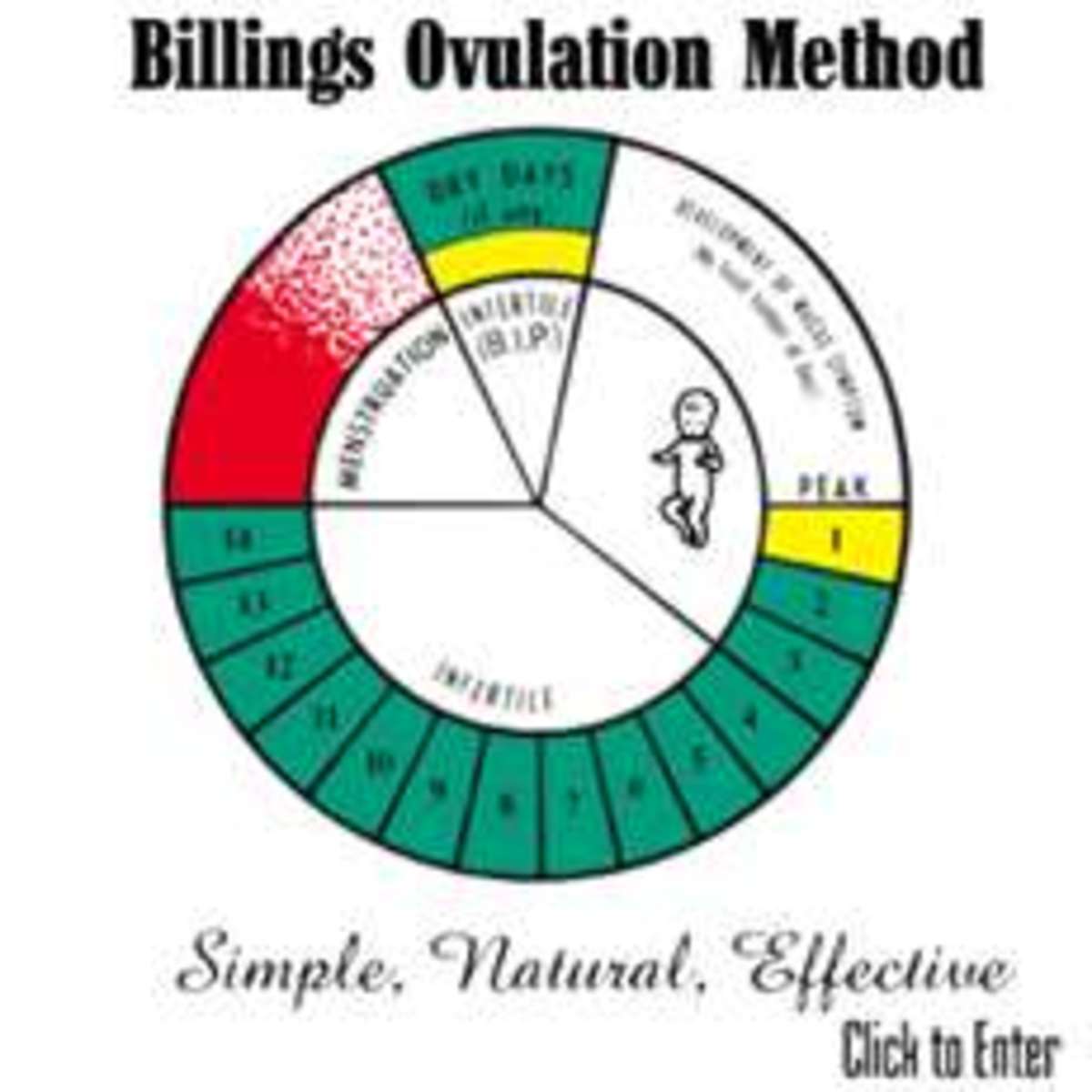Fertility Awareness 101: Understanding your body while preventing or achieving pregnancy
Disclaimer: At the time of writing this article, I have successfully practiced FAM for over two and a half years to prevent pregnancy. This article concerns women's fertility, and does not apply to men's fertility.

Fertility Awareness is known under many names, with a few varieties. You may also see the names Natural Family Planning, Sympto-thermal Method, or Justisse Method. There are other methods which track only one symptom, whereas FA tracks two or more.
Perhaps you have heard of the Fertility Awareness Method (FAM), perhaps you haven’t. Despite the fact that many doctors do not mention or explain it to their patients, Fertility Awareness is practiced by many women for several different reasons. Many know of it as a tool for women who are trying to become pregnant, but it can also be used as a birth control to prevent pregnancy. Others use it to simply mark their overall health.
How? Fertility Awareness is just that: being aware of your own fertility through knowledge of your body’s changes. Did you know that you are not fertile—and therefore unable to get pregnant—for a portion of your cycle? Then there is a portion of your cycle where you are fertile and pregnancy is possible. Knowing exactly when these phases occur for YOU is the first step to knowing when sexual activity might lead to pregnancy.
Unusual Cycles and Overall Health
FAM is also a great tool to mark your overall health or to clear confusion. Suboptimal health and hormonal imbalances affect your cycles, sometimes to the point of complete infertility. Our modern lifestyles are diets are increasingly affecting women’s cycles, and it is no longer uncommon for women to have a non-textbook cycle.
Some women are shocked to begin charting and realize that they are not ovulating, although they appear to have regular “periods”! Others find out why their cycles are so long, usually because the pre-ovulation phase is lengthened, and no longer have to panic over a “missed” or “late” period. Low temperatures often indicate hypothyroidism, and may explain why one woman was so tired all of the time. Others see that their progesterone is weak, increasing the chances of miscarriage. Other women simply like to know what is going on!
Learning FAM can educate you on your body and the rules that govern it, so you never have to feel unsure about your reproduction again. It can also provide insights into other aspects of your health. Below I will describe the basics of FAM, but there is a lot more to learn!
Dispelling Some Myths
Unfortunately the memory and assumptions of the so-called "Rhythm Method" have not yet died. FAM is not the Rhythm Method!! Essentially, RM is inaccurate for two huge reasons:
First, it assumes that a woman’s cycle is 28 days long, and she ovulates on day 14, with little room for changing those numbers. While this is true for some women, it is increasingly untrue for others. Our modern lifestyles and diets wreak havoc on reproductive health, and many women’s cycles differ from the Rhythm’s assumptions greatly. Even healthy cycles don’t have to be 28 days long, but rather 24, or 35. This difference of even a few days is extremely important for both achieving and preventing pregnancy.
Second, the Rhythm Method assumes that women’s cycles are fairly consistent over time, and it predicts the present based on a past cycle. Nothing could be further from the truth. There are all sorts of things that can—and do—change women’s cycles from one cycle to the next. This can include stress, health issues, sleep, medications, change in lifestyle, and more. If you want to achieve pregnancy, you need to take into account your current fertility, not your past fertility! If you want to prevent pregnancy, you should NEVER assume you know when you are going to ovulate based on the past, as this day can easily change.

How Fertility Awareness Works
Fertility Awareness requires you to chart your cycles and symptoms EVERY DAY. Every day this month, next month, after that and so on. As long as you are “practicing” FAM, you are charting continually. Your knowledge of your body and cycles is always based on the present, as it should be!
So, what’s a chart? A FAM chart is where you record your daily symptoms. The main two are your waking (basal) body temperature, and the quality of your cervical fluid. You can also record the position of your cervix, or any other personal signs regarding your cycle such as arousal, bloating, headaches, tenderness, or energy level.
There are several different FAM charts available, based on your own personal needs and preferences.

What's Normal?
98.6 F is commonly known as our "normal" daytime temperature. Many health conditions can change this. The common condition of hypothyroidism can lower basal temperatures into the 96s. Other conditions might raise your temperatures. The accuracy of your thermometer might also be involved. If you notice that your temperature seems low or high, ask your doctor if it might be connected to your health, or just a natural variation.
Basal Body Temperature
The temperature is easy enough. You must get into the habit of taking your oral temperature as soon as you’ve woken up in the morning; before you’ve even gotten out of bed! Use a thermometer that is specifically made for basal (waking) temperatures: their range is shorter but more precise than the "usual" thermometer. Ideally, you take your temperature at the same time every day, with a regular sleeping schedule.
A basal body temperature is taken because it represents a consistent baseline. Everyone’s temperature drops when they go to sleep, and then it slowly rises in the morning. This pattern is predictable and consistent. If you took your temperature at 3pm, however, who’s to say whether you just ate, ran a mile, got stressed out, took a hot bath, or drank alcohol... all of which can affect your temperature. You need consistency because you are tracking your temperature in a matter of tenths of a degree.
During menstruation and before ovulation, your temperature is low due to the prevalence of the hormone estrogen. Once ovulation occurs, it triggers a prevalence of the hormone progesterone, which raises your temperature noticeably. Charting your daily temperature will allow you to see this sudden and prolonged rise in your basal temperature, and you can be sure that ovulation has taken place. Your temperature will remain high until you menstruate, when it drops again and the cycle starts over. If you become pregnant, your temperature will remain high—and might increase even more—throughout the pregnancy. Without conception, any released eggs will die within three days of the temperature rise, and you will be infertile until your next cycle.
Your temperature alone cannot predict when ovulation will occur, however, only once it already has. You will not know if ovulation is coming at day 10, 14, 20, 35, or later. This is why you also chart your cervical fluid.
How do you tell arousal fluid and cervical fluid apart?
Collect some on your finger and wave it around in the air for a few seconds. Arousal fluid usually disappears quickly, while cervical fluid usually remains on your finger. Checking for fluid several times a day can avoid this confusion.
Cervical Fluid
Ew! What?! Don’t worry, it’s not gross or weird. Cervical fluid is a natural fluid that your body makes; you might notice it after using the toilet or on your panties. It is made by your cervix—the opening of your uterus—and in its most fertile phase it can keep sperm alive and safe for FIVE whole days! It is an indicator of your fertility and upcoming ovulation, so paying attention to it will alert you to whether unprotected intercourse could result in pregnancy, even five days later. This is why temperature is not enough: Cervical fluid helps to predict fertility before ovulation, because sperm can be kept alive until ovulation.
So, what do you have to do? This fluid naturally falls down from the cervix and ends up near or on your labia, or even on your underwear. Simply use a clean finger to check the area and test the quality of the fluid, or lack thereof. No fluid or tacky, gummy fluid is not fertile. Once it becomes creamy, lotion-y, sticky, or stretchy like egg whites, it is fertile fluid and could keep sperm alive for a while. Marking this on your chart will soon show a revealing pattern leading to ovulation. After ovulation, your fluid usually dries up again, but not always. It is not a clear marker for exactly which day ovulation occurs, so this is why the temperature is also needed.
Cervix Position
Another option is to check the position of your cervix. This will require you to insert a finger or two to feel your cervix and test whether it is soft, hard, open, closed, high, or low. A soft, open cervix indicates fertility and the possibility of pregnancy. A closed, hard cervix is associated with the infertile phases. This is usually considered an optional symptom… however, if one of your other symptoms is confusing or unclear to you, you can add this to triple-check the state of your fertility.
What These Symptoms Tell You
These symptoms are all a natural part of your body’s cycle through fertility and menstruation. With this knowledge you will know when you are infertile, meaning that you are unable to become pregnant even if you had unprotected intercourse, and when you are fertile, where pregnancy is possible. You use this knowledge to act accordingly whether you are trying to achieve or prevent pregnancy. If you want to conceive, then timing intercourse during your most fertile phases will greatly increase your chances of achieving pregnancy. If you are using FAM as birth control, you will know when you need to abstain from intercourse or use a condom or other barrier device. During infertile phases of your cycle you are free to enjoy uninhibited love-making without fear of pregnancy.


All in All
The exact numbers of success rate (as pregnancy preventative) vary depending on where you look. The perfect use rate, where you always follow the rules, is always very high, approaching that of “the pill”. Many women successfully use FAM to prevent pregnancy for years. The typical use rate, however, including people who don’t always follow the rules, is much lower. This is probably a large reason why some doctors still do not mention FAM to patients. The FA Method is unforgiving, in the sense that a single mistake carries a high risk of pregnancy, unlike if you accidentally miss taking the pill one day. This method requires daily vigilance and thorough understanding to be successful.
It is a great method for those looking for a natural birth control (no side affects, after all), pregnancy achievement, or insight into their health, and who can and will follow the rules consistently. Your partner can become involved too, by helping you chart and knowing how to interpret your chart to make reproductive decisions together.
If, however, you live a lifestyle with less “consistency”—you don’t always wake up at the same time, you engage in casual sex with many partners, you can’t remember to chart every day, etc—then acknowledge this and look for another form of birth control. None of these things are “bad”, but they will affect your ability to practice FAM, and as I said, there is no room for mistakes!
If you think this might be the right method for you, I encourage you to continue your education in it. DO NOT use this article as your how-to! This article is meant only for introductory purposes, and I have not laid out all there is to know or all the rules that must be followed. To learn more, read Toni Weschler’s “Taking Charge of Your Fertility” or Katie Singer’s “The Garden of Fertility.” You should also search for classes in your area or ask your gynecologist to help you learn more. There is also a Fertility Awareness Network you can contact to receive a list of teachers in the USA.
©StandingJaguar









